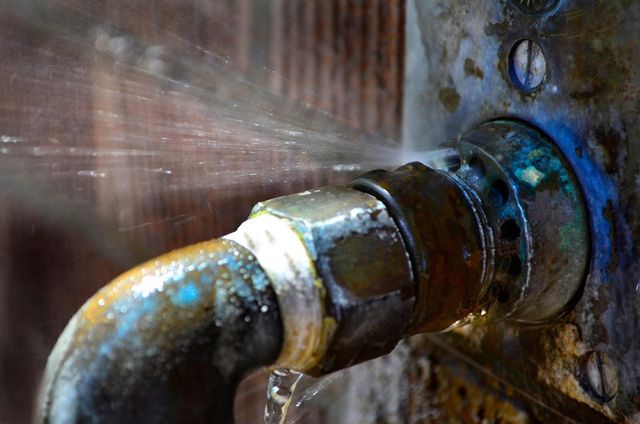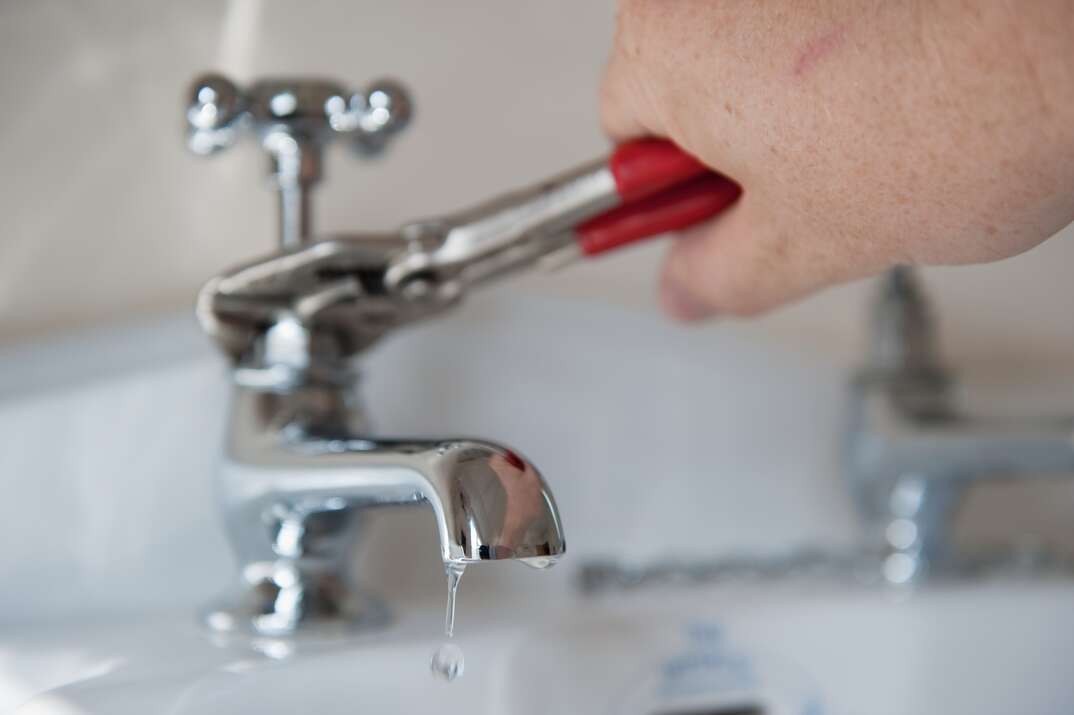Discovering and Resolving the Causes of Unwanted Noise in Your Plumbing System in Your Residence
Discovering and Resolving the Causes of Unwanted Noise in Your Plumbing System in Your Residence
Blog Article
This article listed below relating to Why is My Home Making Strange Plumbing Noises is extremely attention-grabbing. Read it for yourself and see what you think of it.

To diagnose noisy plumbing, it is very important to determine very first whether the undesirable noises take place on the system's inlet side-in various other words, when water is transformed on-or on the drainpipe side. Sounds on the inlet side have actually differed reasons: extreme water stress, worn valve and faucet parts, poorly linked pumps or various other devices, inaccurately placed pipeline bolts, and also plumbing runs having way too many limited bends or various other limitations. Sounds on the drainpipe side usually originate from poor area or, as with some inlet side noise, a design having limited bends.
Hissing
Hissing sound that occurs when a faucet is opened slightly typically signals extreme water pressure. Consult your neighborhood public utility if you suspect this problem; it will be able to inform you the water stress in your location as well as can set up a pressurereducing valve on the incoming water supply pipeline if needed.
Thudding
Thudding sound, usually accompanied by shuddering pipelines, when a tap or appliance shutoff is turned off is a condition called water hammer. The sound and resonance are caused by the resounding wave of stress in the water, which suddenly has no location to go. In some cases opening a valve that releases water rapidly right into an area of piping containing a constraint, elbow, or tee fitting can create the exact same problem.
Water hammer can normally be treated by mounting fittings called air chambers or shock absorbers in the plumbing to which the problem shutoffs or faucets are linked. These tools allow the shock wave created by the halted flow of water to dissipate airborne they consist of, which (unlike water) is compressible.
Older plumbing systems may have short vertical sections of capped pipe behind walls on tap competes the exact same function; these can ultimately fill with water, decreasing or destroying their performance. The remedy is to drain the water system entirely by turning off the main water supply shutoff and opening up all faucets. After that open the major supply shutoff and shut the faucets one by one, starting with the tap nearest the shutoff as well as finishing with the one farthest away.
Chattering or Shrilling
Intense chattering or shrieking that takes place when a valve or tap is activated, which normally vanishes when the fitting is opened fully, signals loose or malfunctioning inner components. The option is to replace the shutoff or faucet with a brand-new one.
Pumps as well as devices such as washing makers and dishwashing machines can transfer electric motor noise to pipes if they are incorrectly linked. Connect such things to plumbing with plastic or rubber hoses-never stiff pipe-to isolate them.
Various Other Inlet Side Noises
Squeaking, squealing, damaging, breaking, and tapping typically are triggered by the growth or contraction of pipes, typically copper ones supplying hot water. The sounds occur as the pipes slide versus loosened bolts or strike close-by home framing. You can typically identify the place of the problem if the pipelines are revealed; simply follow the sound when the pipelines are making sounds. Most likely you will certainly find a loose pipeline wall mount or a location where pipes lie so near floor joists or various other mounting pieces that they clatter against them. Connecting foam pipe insulation around the pipes at the point of call ought to fix the problem. Make certain straps and also hangers are safe and secure and provide adequate assistance. Where feasible, pipeline bolts ought to be connected to large structural components such as foundation wall surfaces rather than to mounting; doing so reduces the transmission of resonances from plumbing to surface areas that can amplify as well as move them. If connecting bolts to framing is inevitable, cover pipes with insulation or other durable product where they contact fasteners, and also sandwich completions of new fasteners between rubber washing machines when installing them.
Correcting plumbing runs that suffer from flow-restricting limited or countless bends is a last resort that should be undertaken just after consulting a skilled plumbing contractor. Unfortunately, this scenario is fairly usual in older homes that may not have actually been constructed with indoor plumbing or that have actually seen numerous remodels, especially by beginners.
Drainpipe Sound
On the drain side of plumbing, the chief goals are to eliminate surface areas that can be struck by dropping or rushing water and to insulate pipelines to include inescapable noises.
In new building and construction, tubs, shower stalls, toilets, as well as wallmounted sinks and basins ought to be set on or versus resilient underlayments to minimize the transmission of sound with them. Water-saving commodes and faucets are much less noisy than traditional designs; mount them instead of older kinds even if codes in your location still allow using older fixtures.
Drains that do not run up and down to the cellar or that branch right into horizontal pipe runs supported at floor joists or other framing present especially bothersome noise problems. Such pipes are large enough to emit substantial resonance; they additionally lug significant quantities of water, which makes the situation even worse. In brand-new building, specify cast-iron soil pipes (the large pipelines that drain pipes bathrooms) if you can afford them. Their massiveness contains a lot of the noise made by water passing through them. Additionally, avoid directing drains in walls shown to rooms as well as rooms where people gather. Walls consisting of drainpipes need to be soundproofed as was described previously, using dual panels of sound-insulating fiber board and also wallboard. Pipelines themselves can be covered with special fiberglass insulation produced the purpose; such pipes have an impervious plastic skin (occasionally having lead). Outcomes are not always adequate.
3 Most Common Reasons for Noisy Water Pipes
Water hammer
When water is running and is then suddenly turned off, the rushing liquid has no place to go and slams against the shut-off valve. The loud, thudding sound that follows is known as a water hammer. Besides being alarming, water hammer can potentially damage joints and connections in the water pipe itself. There are two primary methods of addressing this issue.
Check your air chamber. An air chamber is essentially a vertical pipe located near your faucet, often in the wall cavity that holds the plumbing connected to your sink or tub. The chamber is filled with air that compresses and absorbs the shock of the fast moving water when it suddenly stops. Unfortunately, over time air chambers tend to fill with water and lose their effectiveness. To replenish the air chambers in your house you can do the following. Turn off the water supply to your house at the main supply (or street level). Open your faucets to drain all of the water from your plumbing system. Turn the water back on. The incoming water will flush the air out of the pipes but not out of the vertical air chamber, where the air supply has been restored. Copper pipes
Copper pipes tend to expand as hot water passes through and transfers some of its heat to them. (Copper is both malleable and ductile.) In tight quarters, copper hot-water lines can expand and then noisily rub against your home's hidden structural features — studs, joists, support brackets, etc. — as it contracts.
One possible solution to this problem is to slightly lower the temperature setting on your hot water heater. In all but the most extreme cases, expanding and contracting copper pipes will not spring a leak. Unless you’re remodeling, there's no reason to remove sheetrock and insert foam padding around your copper pipes.
Water pressure that’s too high
If your water pressure is too high, it can also cause noisy water pipes. Worse, high water pressure can damage water-supplied appliances, such as your washing machine and dishwasher.
Most modern homes are equipped with a pressure regulator that's mounted where the water supply enters the house. If your home lacks a regulator, consider having one professionally installed. Finally, remember that most plumbers recommend that water is delivered throughout your home at no lower than 40 and no greater than 80 psi (pounds per square inch).
Whatever the state of your plumbing, one thing is certain — you’re eventually going to encounter repair and replacement issues around your home that require professional help. That’s where American Home Shield can come to your aid.
https://www.ahs.com/home-matters/repair-maintenance/causes-of-noisy-water-pipes/

I recently found that blog entry about Why Your Water Pipes Are Noisy and How To Shut Them Up while doing a search on the internet. For those who enjoyed our post if you please do not forget to pass it around. We truly appreciate reading our article about Why Do My Plumbing Pipes Make A Knocking Noise.
Get Offer Report this page